If you're new here, you may want to subscribe to my RSS feed. Thanks for visiting!
Author of What to Eat When You’re Broke and Bloom Where You’re Planted online course
As those of you who are newsletter or Patreon subscribers know, I spent a month in Romania learning more about the history of this fascinating country. One thing I became particularly interested in was the more recent history of Socialism and Communism in the country. It’s important to note that throughout the life of Nicolae Ceausescu, the words “communism” and “socialism” were used pretty much interchangeably, and that’s because no matter what idealists want to admit, they’re the fruit of the same poisonous tree.
For every young person who says, “This is different, it’s democratic socialism,” please take note: it always starts out “differently” but it always ends in the same place.
Following is my personal interpretation of this history, based on personal research inspired by visits to museums, historical sites, the Palace of the Parliament, conversations with Romanians, and the home of Nicolae Ceausescu and his family. It’s an interesting example because it’s so recent. I believe it can be used as a case study for how this form of government is instituted, how things devolve, and how it ends up. This is the road we do not want to take, but it’s the road being laid out for us by many in power.
The making of a dictator
Nicolae Ceausescu had humble origins. Born in 1918, he grew up poor as one of ten children, in a small rural town outside of Bucharest, Romania. He worked in a factory by the time he was 11 years old, and by the time he was 14 he had joined the Romanian worker movement. This was the precursor of the Communist Party in Romania and was sometimes called the Romanian Socialist Workers’ Party or the Peasant Workers’ Bloc. What we can take away from this is that the early targets are always those who are struggling to survive financially.
Ceausescu quickly became a notable figure in the Communist Youth party and he spent more than two and a half years in prison shortly after his 18th birthday. There, he was beaten and abused so severely that he developed a stutter that never went away. It was also in prison that as fate would have it, he met Gheorghe Gheorghiu-Dej, a revolutionary who introduced him to Marxist-Lenin philosophies, as well as Communist Party leaders.
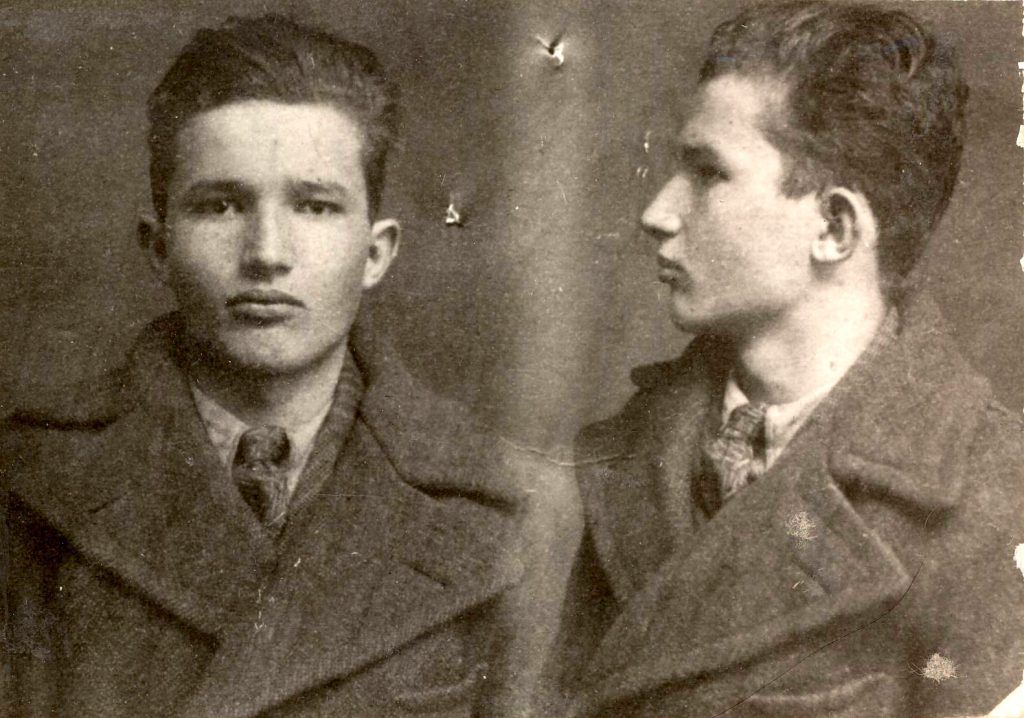
In 1939, he met Elena Petrescu, a fellow staunch member of the Communist Party. By all reports they were so in love they never looked romantically at another person. By 1940, he was back in prison, where he spent the better part of World War II. He escaped from prison in 1944, and married Elena in 1946.
In 1947, Romanian Workers’ Party seized control of the country. Ceausescu’s prison buddy Gheorghe Gheorghiu-Dej, who had been selected as the Communist leader of Romania from 1944 to 1954 and served a 3-year stint as the Prime Minister in the middle of that time. Under Gheorghiu-Dej’s rule, Romania was considered one of the most loyal satellite states of the Soviet Union. Gheorghiu-Dej tapped his protege, Ceausescu, to serve in ever more powerful positions in his administration. He first headed the Ministry of Agriculture (1948–50), then served as Deputy Minister of the Armed Forces as a Major General from 1950-1954. Finally, he held the second highest position in the party hierarchy under his mentor.
During this time, Ceausescu showed a great willingness to subjugate his fellow Romanians for “the good of the Homeland.” He was particularly involved in the forced collectivization of agriculture. Under his authority, there were over 80,000 arrests of peasants, 30,000 of whom were imprisoned. Those who were arrested were opposing the expropriation of private holdings to the ownership of the state. Ceausescu was said to have personally led the military units that suppressed the uprising and ordered the opening of fire from the machine guns in the trucks accompanying the tanks killing and wounding the protestors. Other peasants were imprisoned for “rebellion” and “conspiring against social order.”
During this time, nearly all personal property was lost to the State. People who had nothing at the beginning approved of the situation, but those who owned homes or businesses were not happy.
It was of little surprise that when Gheorghiu-Dej died of lung cancer that he had selected Nicolae Ceausescu as his successor. So it was that in 1965, he was elected the general secretary of the Romanian Communist Party and the de facto leader of Romania.
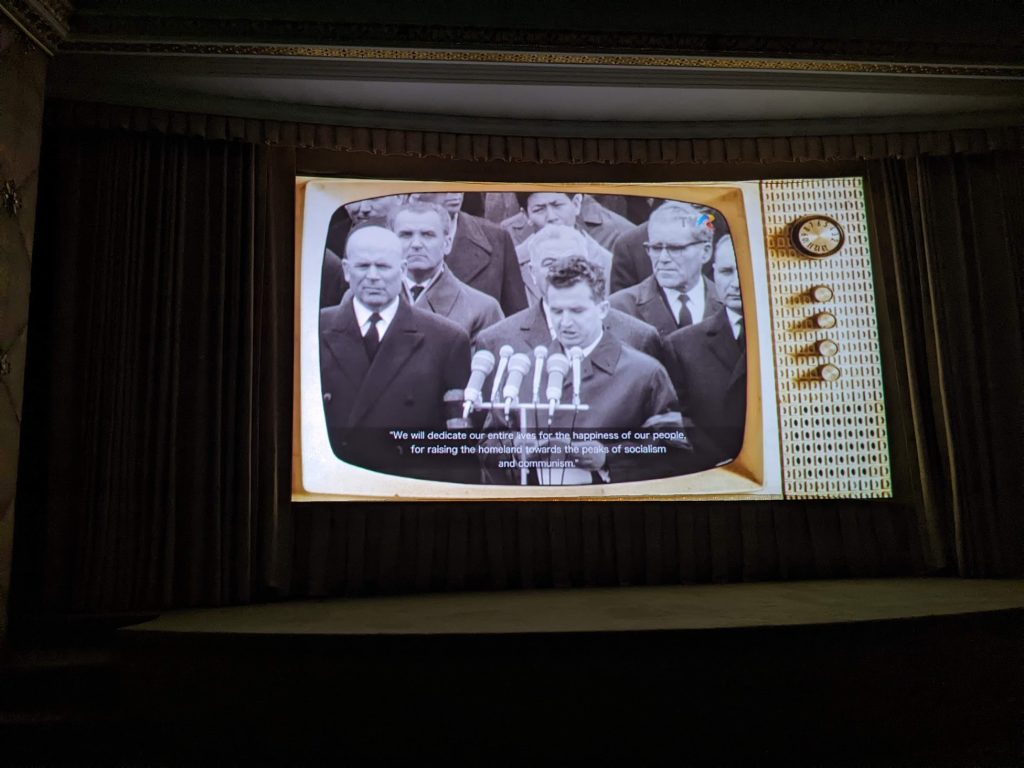
Ceaucescu and his wife created a cult of personality. Elena was called the “Mother of the Nation” and focused mightily on her appearance. She was as power-hungry as her husband, and he looked to her throughout his life for advice.
Initially, Ceaucescu tried to win over the West.
He seemed initially like he was loosening the iron grip of the Soviet Union and Communism. He relaxed censorship and ended Romania’s participation in the Warsaw Pact. He wouldn’t take part in the invasion of Czechoslovakia in 1968 and even condemned the act.
This led to accolades from the Western World. Our own presidents, such as Nixon, Ford, and Carter, praised Ceausescu. They ignored his human rights violations, helped him destroy the Romanian economy, and, many suspect, helped to keep him in power.
Nixon and Ceausescu exchanged state visits and seemed to have a friendship.
President Carter said that he and President Ceausescu “share common beliefs” and adding: “We believe in strong national sovereignty. We believe in preserving the independence of our nations.” He also praised Ceausescu’s stance on human rights.
Ceaucescu focused on making his country a successful player in the world economy. To that end, he borrowed a significant amount of money from the IMF. He had many manufacturing facilities built, and wanted to export cars and other merchandise. But the factories were poorly funded, the workers were not trained, and they certainly weren’t motivated.
Meanwhile, a culture of communism was being created.
While all of this was going on, Ceaucescu was creating a culture that would worship at the altar of Communism and it began with the children.
First of all, abortion was completely outlawed. Many people would agree with this, but not with the reasoning. It had nothing to do with moral beliefs. It was outlawed because the fetuses were considered the property of Romania, and an abortion was “destroying state property,” a heinous crime at that time. An explosion of births at the same time that personal property and profit were revoked meant that many children ended up in absolutely horrifying state facilities. “Ceausescu’s children” have long been a topic of national shame. If you ask about it, most people will look annoyed and refuse to discuss it. To learn more about the orphanages in this era, this article is very thorough and goes along with what I learned.
But these weren’t the only children affected.
Women were forced to “do their part” and go to work, so their newborns were put into state care as soon as the mothers were well enough to work. The children were sent to a nursery school from infancy to age 3, then from 3-5 a preschool, where they learned songs about the homeland. Older children were required to attend school 6 days a week throughout most of the year. Part of their education, of course, was about the benefits of Communism. Furthermore, after-school programs were also required, and the children had to make vows of loyalty.
It amazes me that children who were raised in this atmosphere ever rebelled against communism after being brainwashed practically from birth and never exposed to any other way of life.
The dominoes began to fall.
As we’ve discussed here before, collectivization has never worked and has always ended in starvation. Romania was no different. While improving the economy and creating exports sounds like a great idea, the debt incurred to do so was crippling. But by the 1980s, Romania was meeting every debt payment and getting ever closer to completely paying off their debt.
However, they were doing it on the backs of the people.
Huge amounts of food were exported to pay the debts, not leaving enough to feed Romanians. As I mentioned before, Ceausescu was actively attempting to increase the population putting even more financial stress on people.
Rations were doled out of bread, milk, cooking oil, sugar, and meat, but only outside of Bucharest. Children were forced to work in fields to produce more food. If you were caught storing food, you would face imprisonment. Ceausescu introduced a “Rational Eating Programme” to justify this, saying that it was to make Romanians healthier because they were eating too much. The initial goal was to reduce caloric intake by 15%, and this was lowered again after two years.
But that wasn’t all. Wages were lowered, and price ceilings were enforced, leading to lower quality and more limited goods. Electricity and heating were capped, often being turned off completely in the frigid winter. Hot water was only allowed one day per week. In a couple of the places I stayed, the buildings still had the old communist-era systems where heat and hot water are completely controlled by the area. (Although now, there aren’t caps, and these resources are pretty widely available.)
Gasoline was also rationed and so severely limited that many industries had to revert to manual and animal labor instead of machines.
Meanwhile, the Ceausescu family lived a decadent life in an affluent part of Bucharest. Their home was tightly guarded. It was loaded with priceless gifts from heads of state from around the world, like antique Chinese vases, a rug from the Shah of Iran, Delft pottery, and more. They had a bathroom slathered with gold plating while the people were starving and freezing. They had an indoor pool lined with mosaic tiles and surrounded by art mosaics. They had a sunroom filled with tropical plants in the upstairs of their mansion because they couldn’t safely spend time outdoors. Elena had closets bigger than many peoples’ apartments, filled with fashionable clothes.
Here are some photos I took at the mansion.
But that wasn’t the only insult to Romanians.
While the dark days of Romanian austerity were occurring, Ceausescu had a grand vision. He wanted to build a Palace of the Parliament that would be the head of government in Romania. It was inspired by the “societal organization and mass adulation” that he saw surrounding the government when he had visited North Korea. The surrounding residential neighborhood was destroyed, as well as the National Archives, a prominent hospital, and several monasteries.
The building was the most elaborate in Romanian history and now holds the record for the heaviest building in the world. It’s positively enormous and it’s filled with decadent furnishings, nearly all of which were sourced in Romania. Marble, tapestries, velvets, silks, intricate chandeliers, and richly carved wood fill the halls. Below are some of the photos I took during my tour.
Everything is absolutely massive in scale. For example, the chandelier in the last photo weighs five tons, and the lightbulbs must be changed from the floor above it. The stairways are sold in Transylvanian marble. The curtains in the stairwell weigh 250 pounds per panel.
It was built by forced labor. Three shifts, twenty-four hours a day, seven days a week, the Romanian Army and “volunteers” created this beautiful building. People died during the construction phase, but nobody knows how many. No exact cost has ever been agreed upon but it’s estimated that the building cost $6 billion USD in 1980s dollars.
Ironically, Ceausescu called it “The People’s House.”
A house they were forced to build. A lavish extravaganza of expense while they were starving, freezing, and unable to drive their cars.
Nothing sums up the end result of communism more than that.
While I should have been awestruck by the beauty of the building, all I could think about was the people starving while the national elite luxuriated in opulent surroundings built off their backs.
And then, the People had enough.
This story of Ceausescu’s rise from poverty to the height of power doesn’t have a happy ending for Nicolae or his family.
In December of 1989, the government attempted to evict an ethnic Hungarian pastor named Laszlo Tokes from his home in the city of Timisoara. Members of his congregation surrounded his home to protect him. Then, students joined the demonstration, which rapidly evolved from defending the pastor to an anti-government event. Government forces, the military, and the police opened fire on the protesters, killing 58 men, women, and children and injuring hundreds more.
And that was the beginning of the end. The revolution was on.
Ceaucescu had gone on a state visit to Iran on Dec. 18th, leaving his forces to settle the issue at Timisoara. He returned on the 20th and gave a televised speech, blaming the incident on an “interference of foreign forces in Romania’s internal affairs” and an “external aggression on Romania’s sovereignty.”
The next day, December 21, he called a mass meeting in what is now called Revolution Square. He gave one of his trademark fiery speeches, praising his own “socialist revolution” and again trying to shift the blame for Timisoara away from his government, blaming it on “fascist agitators who want to destroy socialism.”
But the crowd was not having it. They began to jeer and boo him.
You can see the look of shock on his face at the response in the video above. The Ceausescu’s had to take cover, and Bucharest erupted in revolt.
On December 22, Ceaucescu took control of the military after his defense minister, Vasile Milea, committed suicide. The rebellion had spread to every major city in the country. The soldiers thought that Milea had been murdered, however, and switched sides to join the revolution. Ceaucescu attempted to address the crowd that had gathered in front of the Central Committee building but they began pelting him with stones. He, his wife, and four others fled to the roof of the building where they were evacuated by helicopter.
They were captured on Christmas day in the city of Targoviste. They were immediately tried by a court convened by the provisional government. They faced charges of undermining the economy, the illegal gathering of wealth, holding one billion dollars in banks outside of Romania, and genocide. The trial was just for show, and of course, they were found guilty on all charges.
They were executed by firing squad so quickly that the journalist taping the proceedings did not catch it all. Elena was defiant to the end, shouting abuse, and Nicolae tried to protect her. The video of the trial and execution is obviously graphic in nature.
Their children were also arrested but not executed. Zoia, their daughter, spent eight months imprisoned for “undermining the Romanian economy.” She was never able to return to her previous job as a researcher at the Institute of Mathematics. She died of lung cancer in 2006. Nicu, their youngest son, was a Communist politician and did not fare as well. He was imprisoned first for holding children as hostages and economic crimes, then again in 1990, when he was found guilty of misuse of government funds and sentenced to 20 years in prison but released after only two years because he had developed cirrhosis of the liver. He died 4 years later of the disease. Valentin, the oldest son, spent nine months in prison and was forced to watch his parents’ trial and execution on television during his imprisonment. He never faced any charges and returned to his career as a physicist. He has never participated in politics and still lives in Bucharest on his pension of approximately 450 euro per month.
After communism
The road to recovery hasn’t been easy for Romania however, things have steadily improved after communism and its purveyors were eradicated.
The country is the biggest EU exporter of wheat along with France, benefiting the economy rather than starving its people as happened under Ceausescu. Per-capita gross domestic product has risen 10-fold since the 1989 revolution, lifting millions out of abject poverty.
The Brookings Institute offers the following achievements:
People were able to go to court to reclaim personal property that had been taken away from their ancestors by the Communist regime. Life improved drastically for many people.
My observations
My own observations are that it is a country that is on the way up. The beautiful buildings in the city center are being painstakingly renovated, and construction is everywhere. People own their own businesses. Restaurants abound. Tourism is a boon to the economy. It’s a beautiful country filled with warm, friendly people. I was able to talk to a lot of people about their experiences, many of whom shared their memories of that day when the Ceausescus were executed and everything changed.
But there were a couple of people to whom I spoke that said Nicolae Ceausescu was a great man who was misunderstood. One of them favorably compared him to President Trump, explaining he was simply very pro-Romania.
I also thought about how easily this had happened. The first people targeted were those who had nothing and, thus, nothing to lose. They had everything to gain in their minds, such as a place to live, food to eat, etc. But once enough of those people were on board, “you’ll own nothing, and you’ll be happy” was forcibly instituted. People who had something to lose lost it, and they had been silent before, so there was nothing that they could do. This shows how important it is to be careful who becomes the leader of a country, and also the urgency of responding immediately when threats to our way of life occur, instead of waiting until it directly affects us.
Then the children were targeted. I’m still rather shocked that children brainwashed as I described ever revolted against the government, but these were exactly the ones who staged a rebellion – second-generation communists, born and bred.
It’s a complicated history, but there are a lot of lessons we can learn from it. It’s a cautionary tale that we’d be wise to heed, and the moral of it is, no matter how good it sounds, no matter what promises are made…
Socialism.
And.
Communism.
Never.
Work.
Here’s some related reading that’s even more chilling after reading about life in Romania:
- Leaders Seem to Be Using These Disturbing Quotes From Vladimir Lenin as a How-To Manual
- What Will Happen to Personal Property in America?
- The Communist Invasion of America Has Been Quietly Going On Since 1933
- These Radicalized Rich Kids Were Arrested for Rioting. Here’s a Look at Their VIOLENT “Revolutionary Strategy”
- If Gen X Is Going to CANCEL “Cancel Culture” They Need to Understand the Marxist Agenda Driving It
- You Know It’s Bad When a NORTH KOREAN DEFECTOR Says That US Similarities to NK Are “Insane”
- What Would a World Without Personal Property Look Like?
What are your thoughts?
Any mistakes in the retelling of this story are my own, based on my poor Romanian language skills and the inability to always take notes while in the midst of touring. But I was profoundly touched by the stories I heard and the things that I learned. I’ve always been pro-capitalism and pro-liberty, but seeing the results of losing those precious freedoms firsthand was profound.
Do you know more about Romanian history that you’d like to add? Do you see any similarities between the stories I shared and the situation in the United States? Are you concerned we could go down this path? Is there a figurehead like Ceausescu that you could see as leading the way?
Let’s discuss it in the comments section.
About Daisy
Daisy Luther is a coffee-swigging, adventure-seeking, globe-trotting blogger. She is the founder and publisher of three websites. 1) The Organic Prepper, which is about current events, preparedness, self-reliance, and the pursuit of liberty; 2) The Frugalite, a website with thrifty tips and solutions to help people get a handle on their personal finances without feeling deprived; and 3) PreppersDailyNews.com, an aggregate site where you can find links to all the most important news for those who wish to be prepared. Her work is widely republished across alternative media and she has appeared in many interviews.
Daisy is the best-selling author of 5 traditionally published books, 12 self-published books, and runs a small digital publishing company with PDF guides, printables, and courses at SelfRelianceand Survival.com You can find her on Facebook, Pinterest, Gab, MeWe, Parler, Instagram, and Twitter.

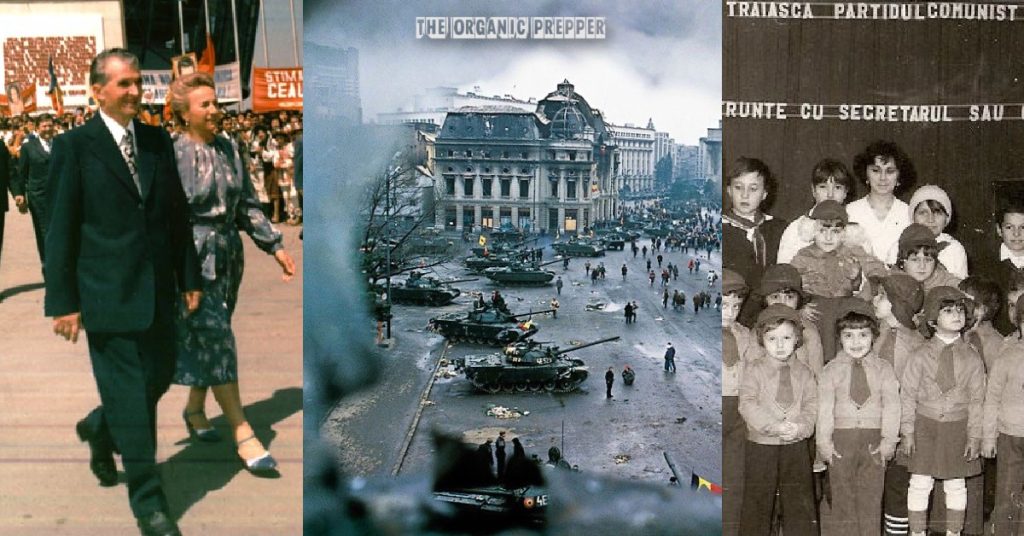
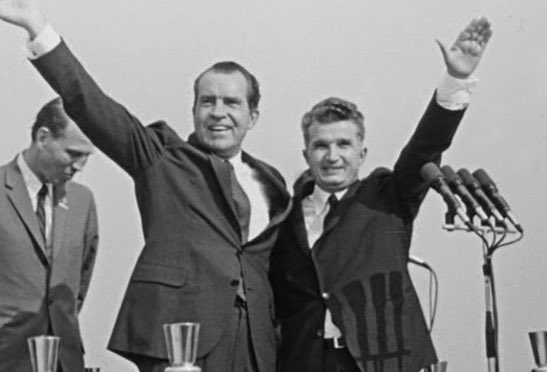
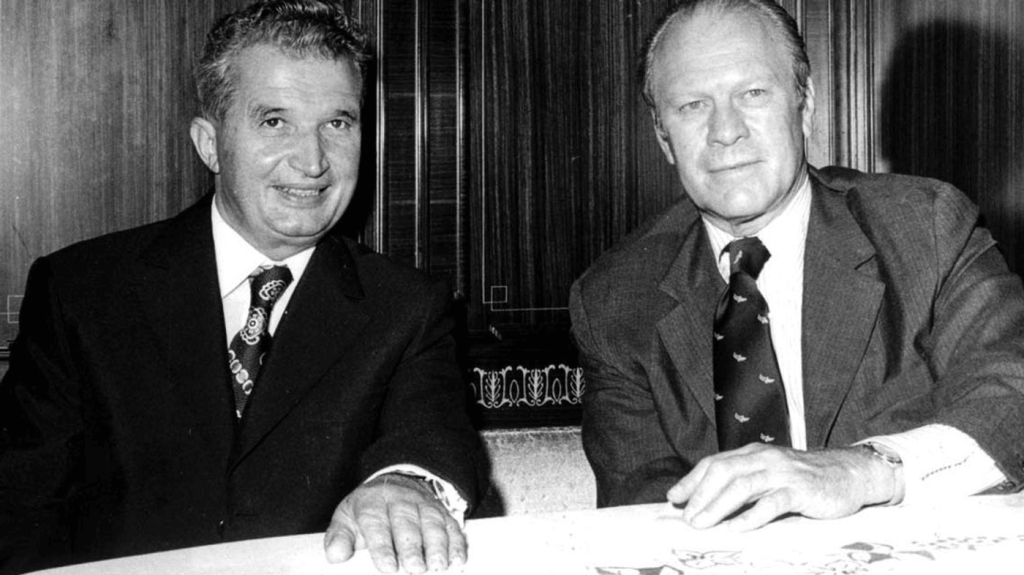
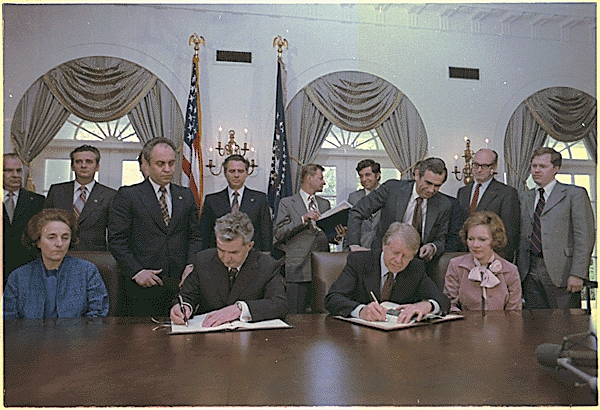
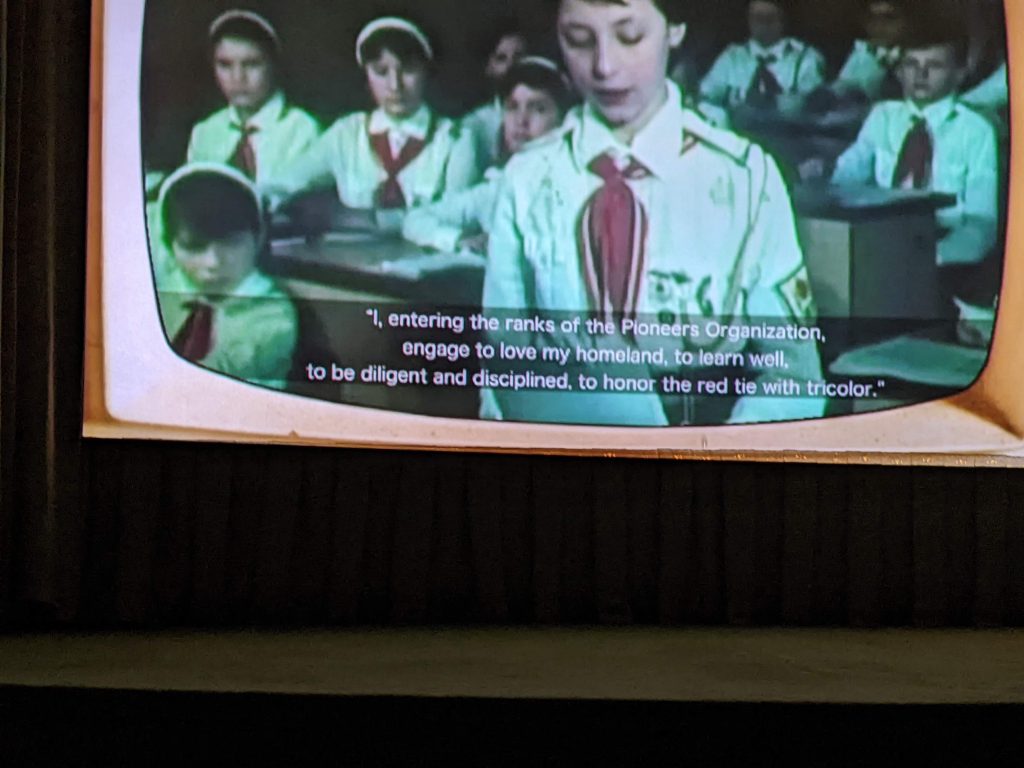
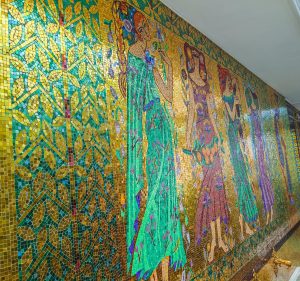

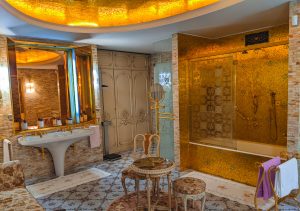
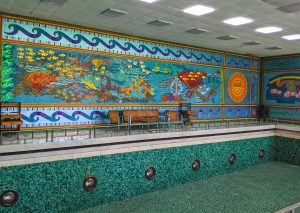
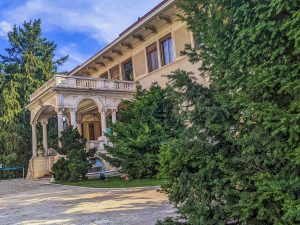
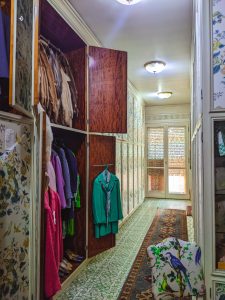
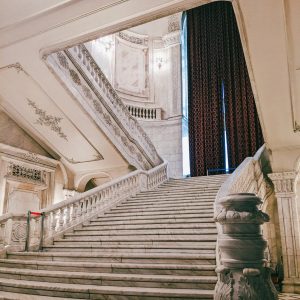
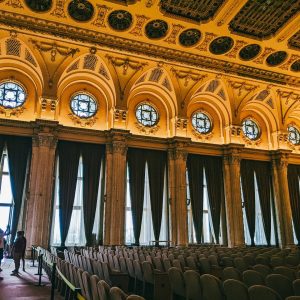
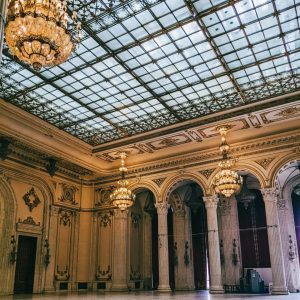
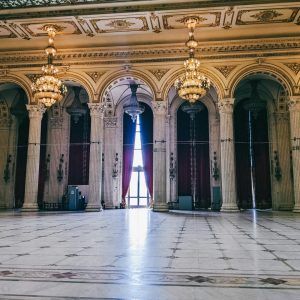
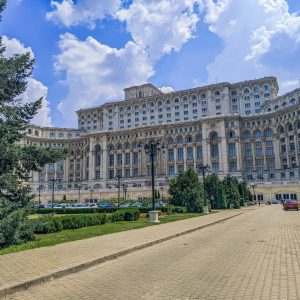
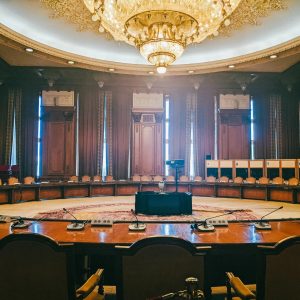
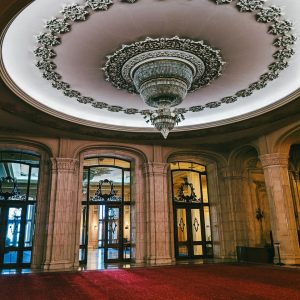
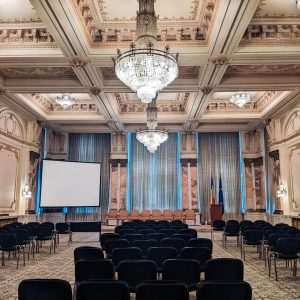
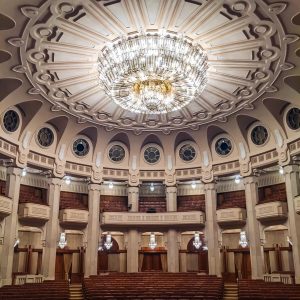
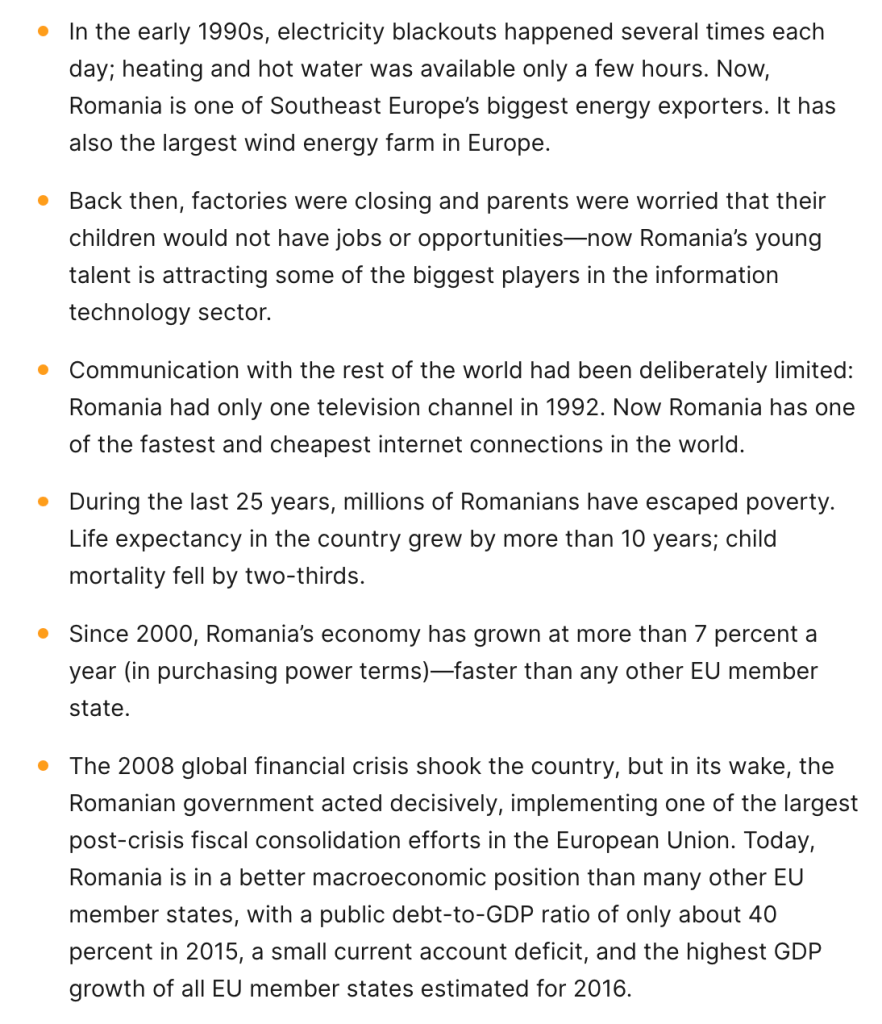















Having studied the role of alcoholism-fueled egomania as the cause of much crime and despotism, I would love to know whether there is anyone left who knows the history of the Ceausescu’s drinking. Were they heavy drinkers as were Stalin, the Kim’s and Mussolini, barbiturate addicts such as Mao, or amphetamine addicts, as was Hitler?
Most awful behaviors can be traced to alcohol/other-drug addiction. This doesn’t excuse misbehaviors; it explains them, which also makes predictions possible, including knowing whether a wannabe dictator can be reasoned with. Non-addicts can usually be reasoned with and trusted; addicts cannot be reasoned with or trusted. This could be important for our dealings in a post apocalyptic world, as well as knowing who should be supported or opposed for political office whether national or local.
My question about Ceausescu: can I add either or both to my list of substance-addicted totalitarians?
The addictive behavior is the result of their mental state, not the cause of it. It is not the Druggies use of drugs that makes them steal stuff, although it is a reason in their minds to do so. But it is the missing moral underpinnnings of their character, that leads them down that path.
People can fall apart and lose their way and fall into bad things. But those with a good moral compass will always get back up on the right side of life. The rest will continue in their downward spiral.
The Ideas of Communism are attractive to those who want everything given to them, that don’t want to work or strive to make their own way in life. Those who refuse to take responsibility for their own actions.
The difference in America and Europe is the mindset and nature of the people. Europeans have been beaten down for centuries by oppressive rulers. They are a perfect example of a population of Sheep.
Occasionally they rise up, but soon revert to being shackled by just another oppressive government. History repeating itself.
Americans still have an independent spirit and hate oppressive governments. We have Whistleblowers, true Conservatives and a freedom loving contingent(that is armed), and that is not afraid to fight to keep their freedoms.
So for now, I don’t see Communisism inour fuuture. But Corporatism is just as big, if not a much bigger threat.
The Communism as one side of the Economic Marxism… no, except North Korea..
But the Communism as Cultural Marxism is what it is now everywhere in the White Christian civilization.
Applied by “Sozi” and removed by “Nazi”.
Don’t forget Churchill, he was not the best example to mankind as an alcoholic overweight bent but was held up as a hero by the puppeteers.
What’s your beef with Churchill?
My grandmother came in 1914 from Bucharest to Canada. There she met my grandfather, also from Bucharest, but she had not known him there. They married and had 7 children. English remained her 2nd language, and so because I did not speak Romanian, we did not communicate much. I think she missed her home, but was only 14 when she left, and undoubtedly was sent away as WW1 was brewing to keep her safe. I appreciate your messages about Romania and I hope to visit there one day.
It’s an incredible country and I’ve loved every minute of being here. The Old Town in Bucharest is like walking through a fairy tale, with baroque architecture and French-inspired buildings. Then the Carpathian Mountains reminded me so much of the Alps in Switzerland and the Bavarian region of Germany. It’s a richly cultured, delightful place and I really hope you get to visit!
Thank you Daisy for this insightful article.. my father was born in Romania 1936 in the German “colony” of Siebenbuergen. There they still speak a specific dialect unknown to most Germans. Family history to the middle ages. With WW11 they had to flee as the Russians approaching in 1944, loosing everything.
When Ceausescu fell my dad returned for the first time since his childhood to his old home, and met up with some of his childhood friends again. Unfortunately he passed away beginning of the year aged 86. I always want to see this fascinating place myself one day. Many stories linger in my mind from his telling.
This is modern day Transylvania and I was able to go there on an afternoon day trip. The influence is indeed very Bavarian – if you were to look around,you would think that you had somehow wandered into the German mountains or the Swiss Alps. Bran Castle is in this region. I have some photos on Instagram on this post and this post that you may enjoy. Click the small arrows inside the photos to go through the series on each post. They’re public so you don’t need an account to see them.
I really hope you get to visit – it’s an area of unbeleivable beauty!
Ceausescu was the greatest president of Romania, he was very inteligent. How did you miss the fact that Ceausescu was an international mediator? (read Larry Wats )He was mediator between USA and China, Vietnam, between Israel and Arab countries. He was ambitious, and he wanted to made Romania an economic and financial power. He upset USA and West, and now we are a colony of you. NATO killed millions of innocent people. Now, because NATO did not have activity created this war with their friends Russia. Do you remember, Malta, Yalta.?https://www.deseret.com/1989/12/24/18837906/nixon-lauded-ceausescu-for-help-with-china-relations
Quite the detailed analysis Daisy, and much more in depth than the “Official Story” one finds on the subject. Being on site and able to take in the history as well as talk to those who lived through it is certainly a once in a life opportunity.
Thank you for sharing your experiences and insights.
I homeschool my boys, and last year I read a novel out loud to my two teenagers – I Must Betray You by Ruta Sepetys. It’s a young adult novel about communist Romania in the 1980s. Her novels are excellent, and this one did a very good job showing young people what communism does.
Not worthy – the prizes are for fantasies to manipulate the public and stay far from the truth, not for the reality I know.
The sides of Capitalism and Comunism are part of the same man-made game for the same profiteers, do not be fooled!
Ceaucescu and one of his sons also raped young Nadia Comăneci, Romanian gymnast and a five-time Olympic gold medalist.
I just read an article that said Montenegro, followed by Romania, are the least expensive countries in Europe.
I wasn’t aware of that, but I did know that his son Nicu had many, many rape allegations against him.
For things that make you go “hmmm…” – Isn’t it odd that Nadia Comăneci would have chosen to hold her wedding party at the Palace of the Parliament in 1996?
One thing you missed and should add is that unlike all the other leaders of the former Soviet bloc nations, Ceacescu defied Moscow’s, NOT Washington’s, orders to step down, leading both him and his wife Elena to be executed by firing squad. The Soviet created National Salvation Front arrested him.
Here are some numbers: WW1-600.000, WW2-500.000, (1948-1989)-1.200.000, (1990-2000)-3.000.000+…and the numbers kept rising, ’till this day…that’s about 30-40 % of Romania’s genepool lost do different “details” of life, and adding the pre-WWI wars: Austro-Hungarian invasion, Otoman Empire invasion, Roman Empire invasion, history was not kind to these people. But, for some reason, i’m sure that whatever “details” life will bring, Romanians will live to tell the tale..
Thank you! I watched a documentary about the fall of the Ceaucescu’s a couple of years ago that portrayed him as a despot but didn”t explain as you did his progression to the excessive heights of ill-gotten opulence he and his wife achieved. How a man with his history could become so obsessed with wealth is still not clear to me, as if one part of his mind wanted to be noble and self-sacrificing, th other could not resist the overindulgent lifestyle he created upon the desperate suffering of his fellow citizens. As lovely as the current population of Romanians appears to be, I have to share my personal experiences around Romanians. A neighbor on mine, a disabled veteran got to a point where despite a genial personality and a reputation oas a hard working, trustworthy fellow n my community became enamored of a Romanian woman who offered him “an investment opportunity” that would bring him wealth, and perhaps enable her to emigrate to the US and become his bride. He mentioned that his role would be to receive large sums of money that would be delivered to individuals in nearby communities. After about a year our local VFW, who had elected him to be their treasurer, discovered that he had embezzled a six digit sum of the organizatons funds. He somehow talked the leader of the group out of pressing charges in exchange for some personal services. This group, which contributed a great deal to the quality of life in our community over many decades has nearly entirely collapsed, and their disgraced Treasurer has disappeared, though someone using his email periodically contacts us for financial assistance. In addition, I grew up in a cosmopolitan coummuinty that includes Romanian emigres and their descendants. I was raised to be welcoming and respectful of all cultues. My Mom called them gypsies, and they are the only cutural group she ever directly cautioned me about. They have a history of and reputation for charming the tourist crowd and being convicted of swindling visitors of their finances. They can be very charming, but if you decide to pursue further communication with friends you made there, it may be that the ones who remained in the country have retaned their integrity. Howeer, if these were my acquaintances, I would be very be prudent and cautious about expectations and committments.
That’s horrible what happened to your friend.
You may find it interesting that Romananians and Roma (gypsies) are two different groups of people. While there ARE Roma in Romania, being Romanian doesn’t necessarily mean that you’re Roma. Quite often the Roma keep to themselves and don’t really integrate into Romanian society.
Yes, the country is beautiful and some of the people are friendly, but have not quite met the ones who are warm. City life I suppose. And yes, the country is up-and-coming via national and private debt. And, what was left out of the article, among other things, is that post-communist times presented the Western powers with the looting of productive elements such as factories, austerity for the “little people”, and of course the over-all concept of “Democracy”. The country had most everything it could have, such as petro-chemical production, good farmland, natural gas production, decent potable water, auto production, etc. The asset-stripping also took place in Bulgaria, Serbia parts of Central Europe, and now Ukrane. By the way, most of the present-day farmland is owned by foreign corporations.
First part of the story looks ok…
Second is a mix of reality partially shown to mislead the conclusion.
The descritption of a demolished Economy, sold as an Western order for little to insignificant money… for the foregin interest, .
Actual Romania owns mostly nothing … and imports most of the food thanks to the mix of anti-Romania’s ruling implementation under the blackmailing to accede to NATO and EU. A colony where the average one can no longer enjoy freedom and the sexual degeneration is pushed toward ruling the country, as the destruction of the nation (as we see the Western countries.)
… guess who came in power after the ritualistic murder in the first day of Christmas (!) of both Ceausescu with the specific goal to exploit the great value of Romania?
What specific group, I mean… you see, like in 1918 in Russia – same kind of International gang.
1 of 3 Romanians leave outside the country with no “fire” war but $$$-war…. helped by the obedient and corrupted politicians to leave to survive in under-paid jobs and [too] many discriminated.
—
Ceausescu came with a new way of doing the Economy and this was not to be forgiven!
No International credit, all international debt paid (got rid of usury!), no income tax, and… no class-strugle, meaning the end of the Marxism.
PS1: 99% of children in orphanages were Gypsies, like the indians (natives in foster family in Canada)
PS2: the picture of his “properties” never been owned by Ceausescu, either money in foreign banks; everything was of the Romania’s State property.
Thanks for the article. I’m reading up on the countries history as I’m going on a guided tour there in October. We will be partying on Halloween in Bran castle! If you have any prepper tips for what I should pack I’m all ears.
Oh fun!
It’s a wonderful country. I prep for going out in the rural areas just like I would any road trip. Some snacks, extra clothing for colder weather (it’s 10-20 degrees colder in the mountains than in Bucharest), water, and dry socks. Be warned there are TONS of bears in the mountains so you don’t want to just wander out there unprepared.
You’re going to have a fantastic time! If you get a chance visit Peles Castle too – it’s magnificent! At Bran Castle, be prepared for a lot of extremely steep and perilous steps. It’s a really fascinating place to go!